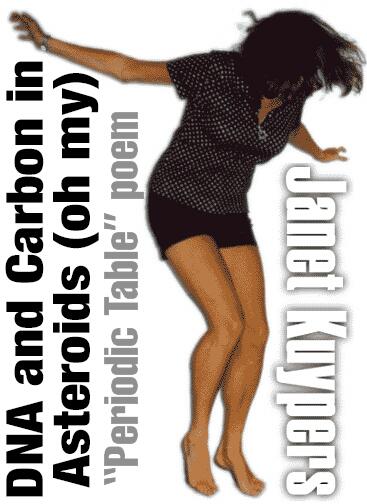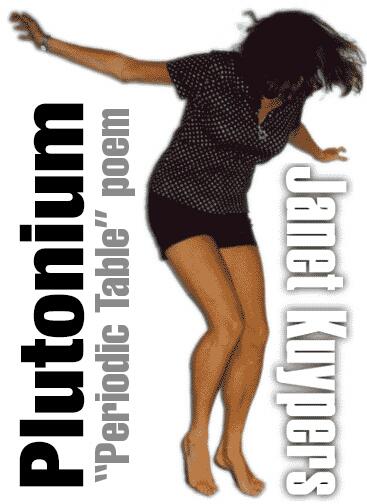DNA and Carbon, in Asteroids (oh my)
Janet Kuypers

bonus poem from the “Periodic Table of Poetry” series
3/13/13
You know, us Carbon-based life forms
always wonder where we came from,
how we got here.
And with science on our side,
we’ve looked beyond
guessing and story telling
to find proof in our answers.
And still, we look beyond
what we know around us
to find out how we were formed
here on earth.
#
A couple of asteroids
just flew
perilously close to the earth.
Asteroid 2012 DA 14 intersected the iridium constellation,
flew through all of our global communication satellites.
An asteroid turned meteor blew up in the atmosphere
above the Ural mountains;
every Russian on the road
filmed the sky explosion
with their dashboard cameras,
before the sonic boom shattered windows everywhere
and injured over a thousand people.
And over two thirds of our planet
is covered in water,
just think of all of the impacts
we’re missing out on;
I mean, our news feeds
don’t come from the middle of the ocean…
So we seem to think that these stellar explosions
are becoming more and more rare,
because our planet is pocked with massive impacts
from the earth’s early history.
But now that these scientists
have been scanning the skies
and studying the meteors buried in Antarctica,
they’ve learned that many asteroids and meteors
colliding with our planet’s crust
actually carry atanine and guanine.
Asteroids carry major structures that form DNA.
It’s very possible
that throughout the early history of earth,
asteroids collided with this planet,
leaving their Carbon-rich DNA structures behind
to help start life, and populate the earth.
I mean, Scientists have always wondered
how the elemental sextet of life:
Carbon, oxygen, hydrogen, phosphorous, nitrogen, calcium,
how did these elements got together
in just the right way
to eventually create earth’s Carbon-based life forms.
I guess it would help that primordial soup
if some asteroids brought along
a little bit of DNA,
so some of our building blocks
came ready-made.
Astronomers say that we’re all made out of stardust,
because all of our atoms
originate from the explosion of stars,
but for this Carbon-based life form,
it’s cool that some of these asteroids and meteors
carried our Carbon —
and some of our DNA —
here to planet earth,
to jump-start our creation
and get our genetic gears going.


